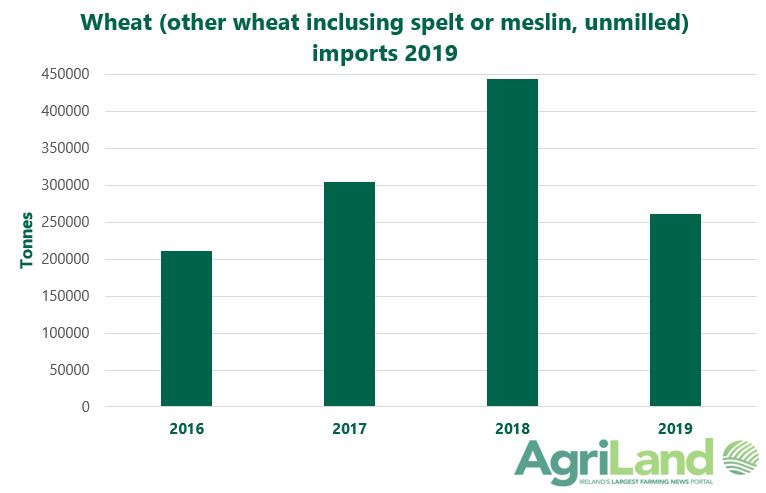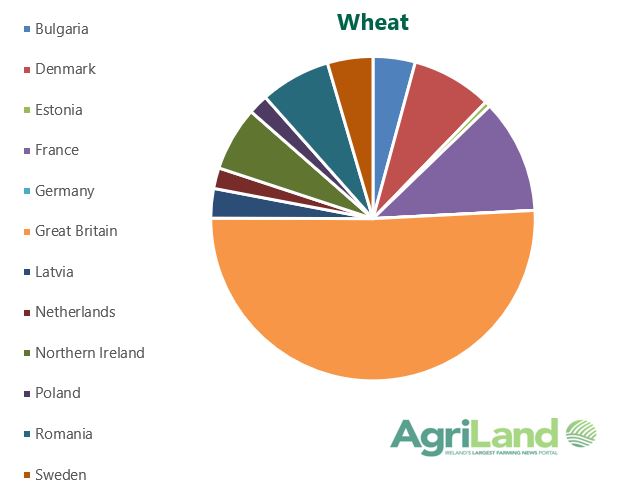261,381t of wheat (other wheat including spelt and meslin, unmilled) were imported into Ireland in 2019, according to data from the Central Statistics Office (CSO).
That’s a drop of 41% from 2018 when 444,235t were imported.
The data suggests that wheat imports may be returning to more normal levels, following the fodder shortage of 2018. 2018 saw a 40% increase in wheat imports.
However, the reduced level of wheat imports looks to have been compensated for by high maize imports.
Also Read: 1.54 million tonnes of maize imported in 2019In 2017, 304,788t were reported to be imported into the Republic of Ireland, while in 2016, this figure was much lower at 211,740t.
Where did this wheat come from?
The majority of this wheat came from the countries outlined in the chart below. Great Britain was the main source, accounting for 50% of all wheat imports.
11% of wheat imports came from France, while Denmark accounted for 8% of the total and Romania accounted for 7%.
It should be noted that the majority of wheat imported for animal feed falls under the category entitled – “other” wheat (including spelt) and meslin, unmilled. Flour of wheat (or meslin) and durum wheat fall under separate categories.
How much did the wheat cost?
These wheat imports were valued at €49,336,870, meaning that the average price per tonne was €188.75/t.
It should be highlighted that this is raw data obtained from the CSO. This figure is the landed cost and would not include handling or transport to the mill, merchant or farm.
AgriLand will have more import and export figures throughout the week!


